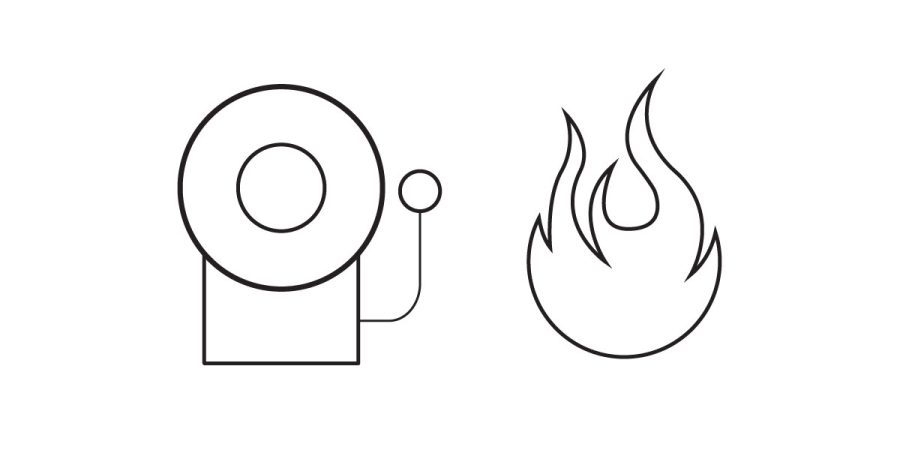Definitions
Incipient Stage: No visible flame, or noticeable heat has yet been produced
Introduction
Various fire alarm and detection systems are used depending on when it is the best time to know about the fire and what will provide the quickest response. Normally a combination of fire detection devices are needed, depending on the space. Many municipalities offer code incentives for better fire protection systems, an example of this is sprinkling a building may allow a higher maximum occupancy.
- Example: An IONIZATION DETECTOR will not function properly if the air currents needed to set the alarm off will not enter the device.
- Note: A fire can smolder and produce smoke long before it reaches the flame stage.
- Note: Fire alarm systems are required by code in many buildings such as hotels, schools, and other places of assembly.
Code Locations
Code requires and dictates the location of many fire alarm devices. Detectors are generally required near fire doors, in exit corridors, individual rooms, and places of public assembly. They are also sometimes required in main supply and return air ducts (within the duct or shaft).
Carbon Monoxide
Carbon monoxide detectors are normally required in places where a fuel burning appliance (kitchens) are located or an attached garage location.
Fire Alarm Notifications
Activation
Several things should happen when a fire alarm activates. The fire alarms will send a notification to a central station that then controls the response.
The doors that connect to that fire zone all close, and the supply and air return ducts are all shut down, and exhaust that vents that space is turned on high. Additionally all fire dampers will close to seal spaces. This creates a negative pressure that keeps all the generated smoke contained within the space. Additionally the buildings egress stairs are pressurized to prevent smoke from entering them, even if the doors are momentarily opened. Vestibules are then pressurized as well, not as much as the stairs, but more than the fire zone. This creates a complex web of pressurization to try and direct smoke throughout the building.
2 Main Types of Alarms
- Operates a local alarm on the premises only
- Sends an alarm to the fire department as well (high rise and city buildings)
Types of Fire Detection
| Type | Detection Type | Detection Schedule | How it detects | Notes |
| Ionization Detector | Particle | Early Warning – Detects smoldering fire | Responds to combustion-ionized particles. | Not appropriate where fires may produce a lot of smoke but few particles. |
| Gas-sensing Detector | Gases | Early Warning | Detects combustion gases that are not normally present in the air. | Normally used in conjunction with ionization detectors so that gases and particles are detected. |
| Photoelectric Detectors | Smoke | Mid-Range Warning | Contains a light beam that is obscured by smoke. Variations: Projected Smoke Beam DetectorScattered-light Photoelectric DetectorsLaser Beam Detectors | Useful where potential fires may produce a great deal of smoke before burning into flames. |
| Flame Detectors | Flame Produced Infrared Or Uv Light | Final Stage Warning | Respond to infrared or ultraviolet radiation given off by flames. | Disadvantage of these types is that a flame must be present in the room for the detection to go off. By that time it may be too late because smoke from a smoldering fire could be toxic. |
| Rise-of-temperature Detectors | Temperature | Final Stage Warning | Sense the presence of heat and can be set to trigger at specific temperatures. |





2 Comments
Leave your reply.